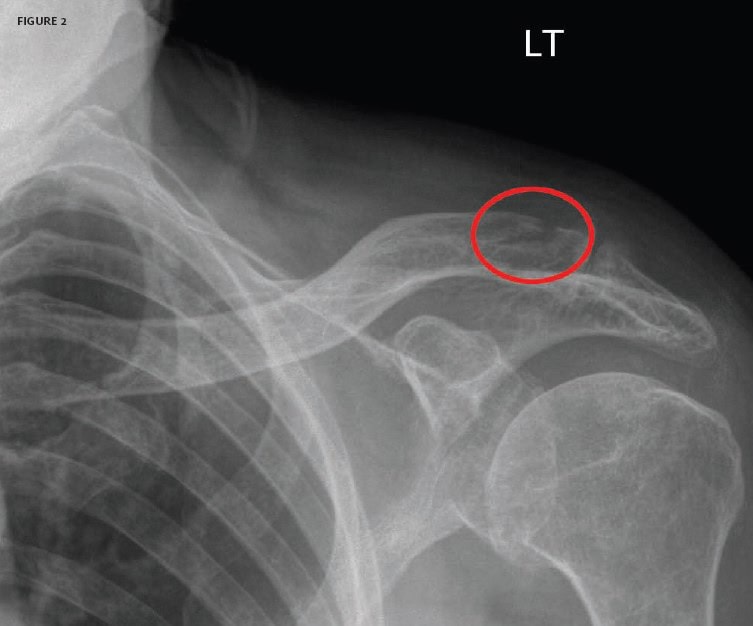Published on

The patient experienced a fracture of the distal clavicle. He was placed in a sling, with instructions to follow up with an orthopedist the following day.
As noted in Wheeless’ Textbook of Orthopaedics, distal fractures account for 10% to 15% of all clavicle fractures. Typically, these have a high incidence of non union; most are asymptomatic, with relatively few requiring surgery.1
The location of the fracture along the clavicle has a great effect on prognosis. Lateral fractures, such as the one seen here, tend to heal spontaneously and often do not require surgical inter- vention; medial fractures can be more serious, however.
Reference
- Wheeless’ Textbook of Orthopaedics. Clavicle Fractures. Available at www.wheelessonline.com/ortho/clavicle_fractures. Accessed March 14, 2008.
Acknowledgment: Case presented by Nahum Kovalski, BSc, MDCM.

